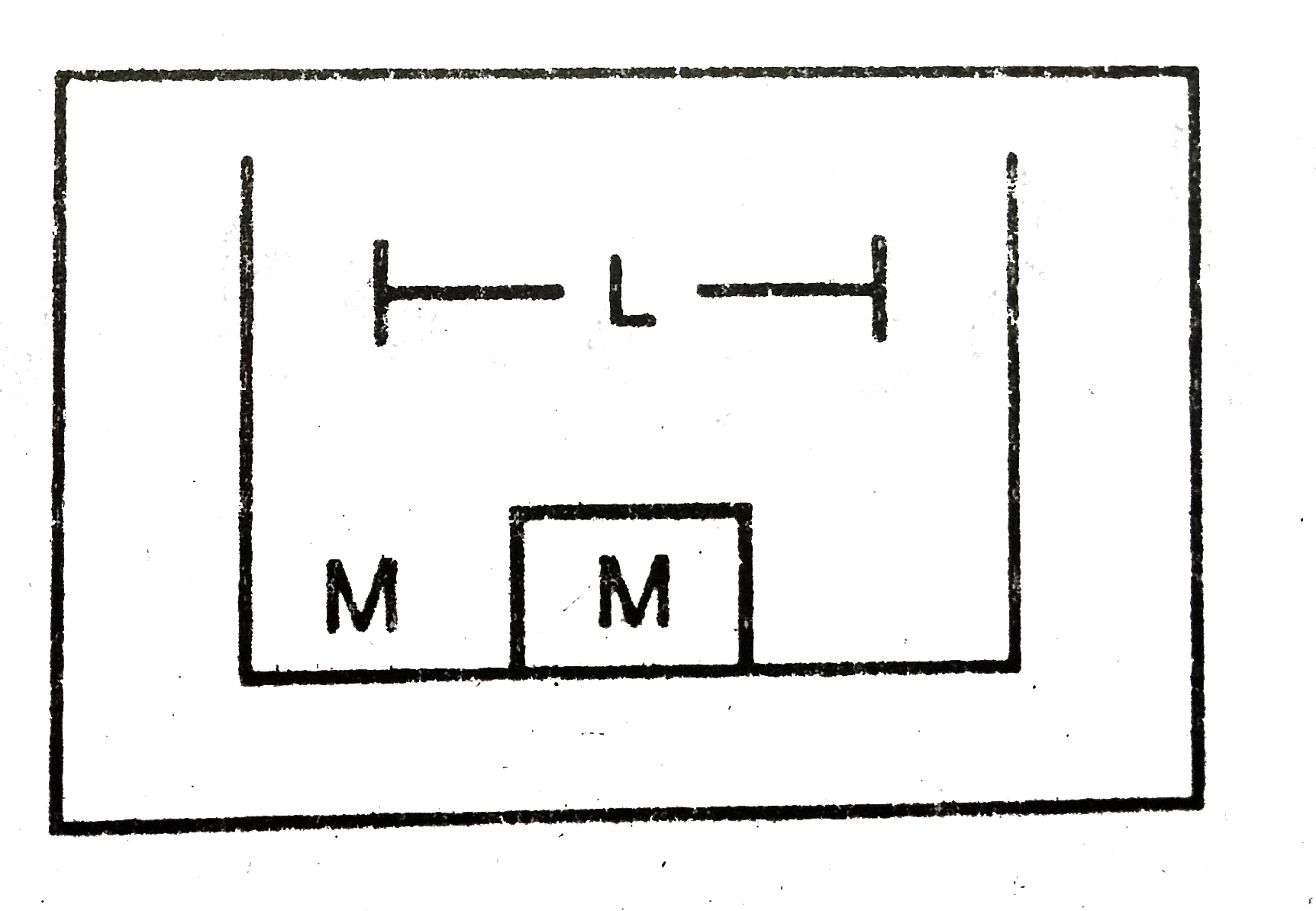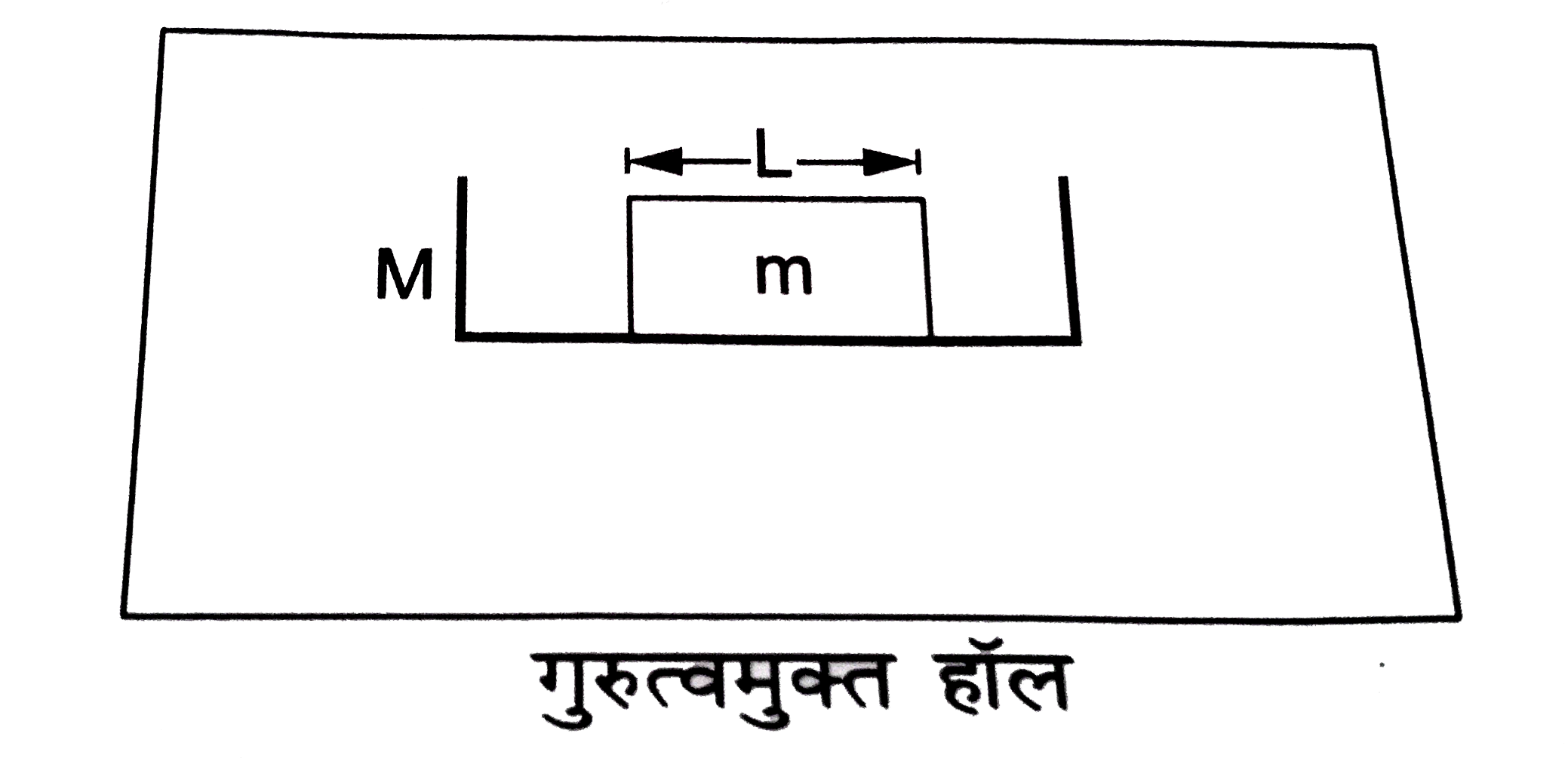Consider a gravity free hall in which a tray of mas M, carrying a cubical block of ice of mass m and edge L, is at rest in the middle.. If the ice melts, by what distance does the centre of mass of the tray plus the ice system descend?
 Solution in Tamil
Solution in Tamil
As there is gravity free after the ice melts, It would tend toacquire a phereicla shape. But, there is no exterN/Al force acting on the system. So, the centre of mass of the system

Topper's Solved these Questions
Similar Questions
The centre of mass of a system of particles is at the origin. It follows that:
05:47View SolutionAn aluminium vessel of mass 0.5kg contains 0.2kg of water at 20∘C A block of iron of mass 0.2kgat100∘C is gently put into the water .Find the equilibrium temperature of the mixture, Specific heat capacities of aluminium , iron and water are 910Jkg−1K−1470Jkg−1K−1and4200Jkg−1K−1 respectively
02:05View SolutionFind the accelerationof the moon with respect to the eath from the following data, Distance between the earth and the moon =3.85×105 km and the time taken by the moon to complete one revolution around the earth =27.3days
04:05View SolutionA cubical block of ice of mass m and edge L is placed in a large tray of mass M. If the ice melts, how far does the centre of mass of the system ''ice plus tray'' come down?
06:42View SolutionAn ice cubeis suspended in a vacuum in gravity free hall. As the ice melts it
01:44View SolutionConsider an ice cube of edge 1.0 cm kept in a gravity-free hall. Find the surface area of the water when the ice melts. Neglect the difference in densities of ice and water.
02:44View SolutionA cubical ice block of side length 'a' is floating in water in a beaker. Find the change in height of the centre of mass of (water+ice) system when the ice block melts completely. It is given that ratio of mass of water to mass of ice originally in the containe is 4:1.
05:46View SolutionA block of ice with mass m falls into a lake. After impact, a mass of ice (m)/(5) melts. Both the block of ice and the lake have a temperature of 0^(@)C . If L represents the latent heat of fusion, the distance the ice falls before striking the surface is
03:22View SolutionA man of mass m stands at the left end of a uniform plank of length L and mass M, which lies on a frictionaless surface of ice. If the man walks to the other end of the plank, then by what distance does the plank slide on the ice?
03:35View Solutionद्रव्यमान M वाली एक बड़ी-सी ट्रे के ठीक बीच में बीफ का एक छोटा-सा धनाकार रखा टुकड़ा रखा है | इस टुकड़े का द्रव्यमान m तथा इसके किनारो की लम्बाई L है| यदि पूरी बर्फ पिघल जाए तो 'ट्रे+बर्फ' संहति का द्रव्यमान केंद्र कितना नीचे खिसक जाएगा ?
01:46View Solutionपृथ्वी से दूर किसी स्थान पर एक हॉल में गुरुत्वाकर्षण बल नगण्य है | इस हॉल में M द्रव्यमान की एक ट्रे में L लंबाई और m द्रव्यमान का एक बर्फ का घन बीच में रखा हुआ है| यदि यह पिघल बर्फ जाए, तो 'ट्रे एवं बर्फ संहति के द्रव्यमान की स्थिति में क्या परिवर्तन होगा ?
 03:32View Solution
03:32View SolutionA cubical block of ice of mass m and edge L is placed in a large tray of mass M. If the ice melts, how far does the centre of mass of the system ''ice plus tray'' come down?
02:19View SolutionAn ice cube is suspended in a vacuum in gravity free hall. As the ice melts it
View SolutionConsider an ice cube of edge 1.0 cm kept in a gravity-free hall. Find the surface area of the water when the ice melts. Neglect the difference in densities of ice and water.
02:35View Solutionm द्रव्यमान का बर्फ का ब्लॉक झील में गिर जाता है। जल की सतह से टकराने के बाद बर्फ का m/5 द्रव्यमान पिघल जाता है। बर्फ के ब्लॉक तथा झील दोनों का तापमान 0∘C है। या L गलन की गुप्त ऊष्मा हो, तो जल की सतह से टकराने से पूर्व बर्फ के गिरने की न्यूनतम दूरी होगी :
02:31View SolutionOn a large tray of mass M an ice cube of mass m, edge L is kept. If the ice melts completely, the centre of mass of the system come down by
01:08View Solution

